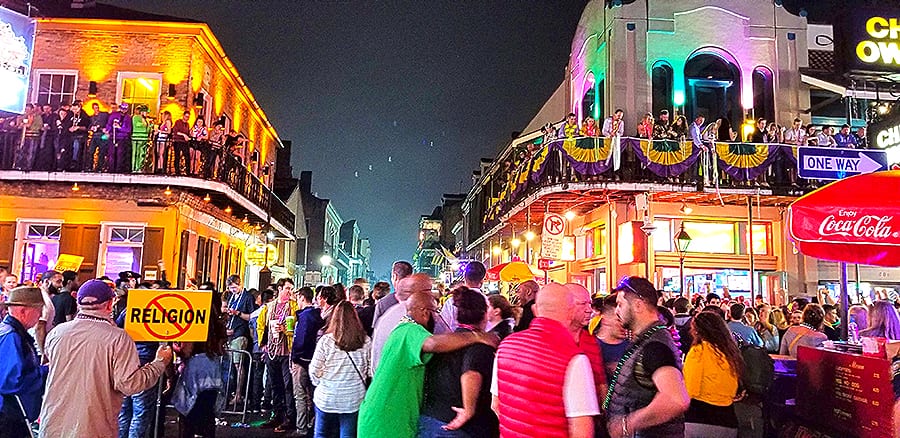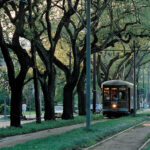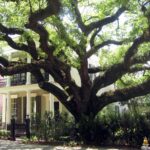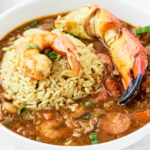
Understanding New Orleans: Part One
How do you say dat?
If New Orleans isn’t weird enough on the surface, we have the most intriguing relationship with language and how things are pronounced. It’s there in the way we talk, especially how we name places and things—for example, the name of our city. For one, it’s not N’awlins as you see on TV. But locals often can’t agree on how their own city name is pronounced. Long-time residents most often pronounce it simply “New OAR-linz.” At the same time, others swear by “New-OR-lee-uhns.” And, while it’s not often said in conversation, songwriters often use the pronunciation “New Or-LEENZ” because of its ability to rhyme with a lot of words.
New Orleans is known for its strange pronunciation of street names too. While you may enjoy a glass of “BURR-gun-dy” wine, Burgundy Street is pronounced “Burr-GUN-dy.” And Chartres Street is pronounced “CHAR-turz.” If you don’t know how something is pronounced… just ask! Some locals still don’t know all of the pronunciation of things here years after moving here! Learn more here.
What happens in New Orleans…
We’re not Las Vegas (though Bernard de Marigny did introduce the US to Craps here); we’re a bit crazier- and some would say dirtier- down here. We want you to have fun and fly your freak flag high! But remember that people do live here and call New Orleans home. And we’re (mostly) kid-friendly! One of the myths is women flashing their breasts for beads. Yeah, it sometimes happens on Bourbon Street- but do note that it is illegal (and not something locals would do… and you don’t have to either!) You can drink on the streets here, costume, go crazy- we locals do. But despite many rumors to the contrary, we do have laws… many of them are even enforced! Our New Orleans walking tours are both adults-only and family friendly… ask us about any adult-only or family-friendly activities you desire; we’d be glad to steer you in the right direction.
Speaking of Beads…
Don’t let the shiny roundness charm you. You can usually find beads for free, thrown from one of the many parades we have going on. And we don’t just parade during Mardi Gras, and there are parades almost every month of the year for something! Lookup a parade, and catch some beads! Everyone that lives in New Orleans has a stash of old beads in closets, under the bed, or the attic. And along with beads, most parades have their own unique throws- catch them if you can. It’s a unique part of New Orleans tradition.

Lakeside, Riverside, Uptown, Downtown…
Getting your bearings in New Orleans can be disorientating due to the fact that our city is laid out on multiple angles. Not even our streets are normal! This, we rarely use cardinal directions (like north, south, east, or west) as oftentimes, a street will take you in quite a few of those directions! Getting directions can sometimes be like deciphering code- so we’ll help you out. When looking at a map of New Orleans, we have four of our own markers for directions: Lake Pontchartrain, The Mississippi River, Uptown (where our Garden District walking tour takes place), and Downtown. Lake-side is the top of the city, River-side is the bottom, Everything on the French Quarter side of Canal Street and sort of eastward is downtown, and everything on the other side of Canal is Uptown.
So if someone says, “It’s on the downtown, river-side,” You will know what corner you should be standing on.
What’s a neutral ground?
The neutral ground is what people in New Orleans call medians in the middle of the street. The term originated from back in the early 1800s when Americans started moving into the area into the Uptown side of Canal Street. They didn’t like the downtown Creoles (and the Creoles didn’t like them either!) They still had to do business with each other, though. Instead of going to each other’s offices, they would meet in the middle of Canal Street on the original neutral ground. The name is now used for any grassy median in the middle of a street.
Who is a Creole?
The word Creole has a lot of meanings. The original meaning has nothing to do with race- it is a bastardization of the word “criollo,” meaning a person born and usually raised in a Spanish-American country. In Louisiana, though, we were under both French and Spanish rule at the time, and “Creole” was used to distinguish those people actually born here from those born in France and Spain. It didn’t matter what race you were; it mattered if you were native to New Orleans or not. After the Civil War, race divided how Creoles were defined: White Creoles (of French or Spanish descent) and Mixed-race inhabitants were considered Creoles of Color. The are many other types of Creoles also.
And there’s more!
That’s just the beginning of information about New Orleans’ distinct culture. Visit us on tour for a lot more!






